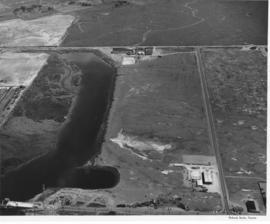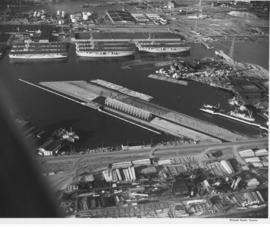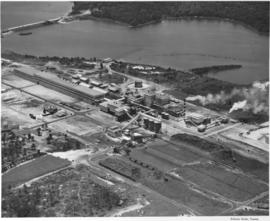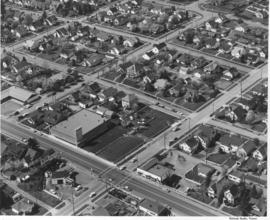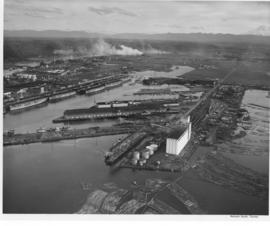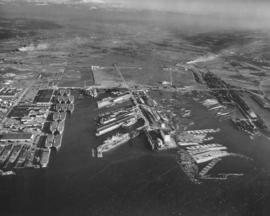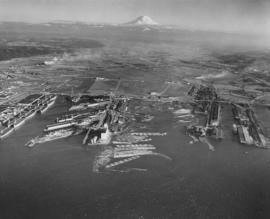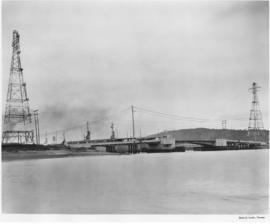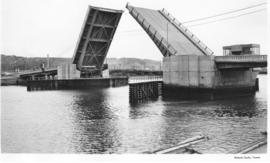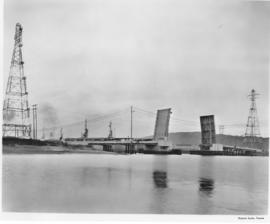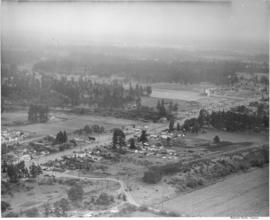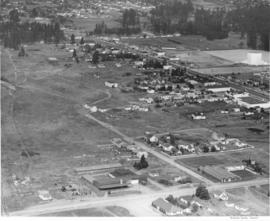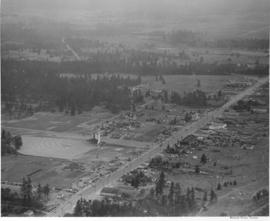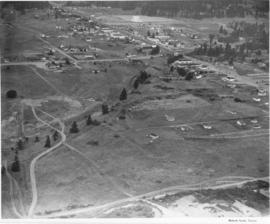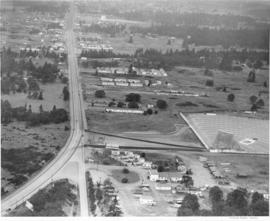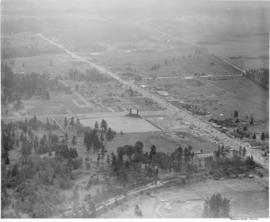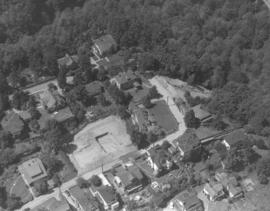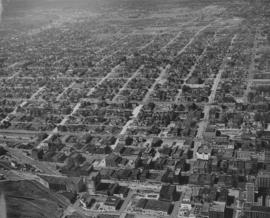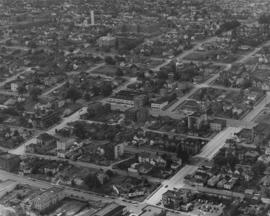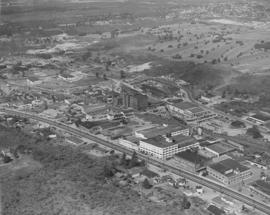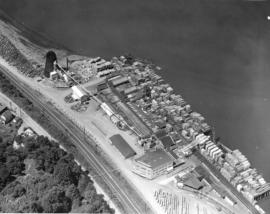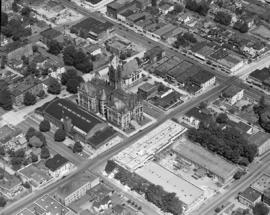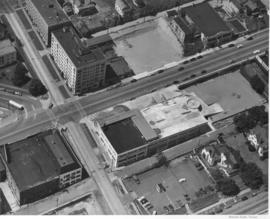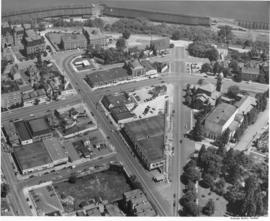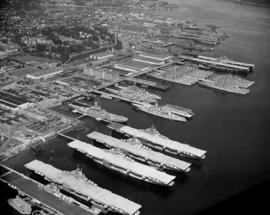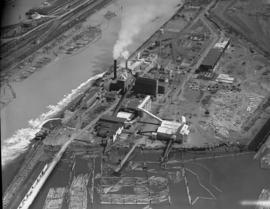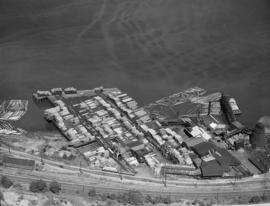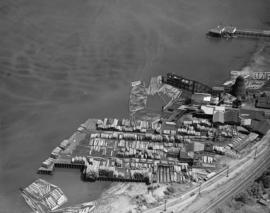- Item
- 1953-07-02
Part of Richards Studio Photographs
Aerial photographs of the Port of Tacoma at low tide. The body of water is the Port Industrial Waterway, which was being promoted as a future deep water channel. The land lying to the right of the waterway was 1 1/2 miles of industrial land with deepwater access. The road in front of the waterway is East 11th Street, to the right is the Port of Tacoma Road and to the rear is Lincoln Ave. The area behind Lincoln Ave. was scheduled to be filled with the dirt dredged from the waterway and then sold to industries. Stauffer Chemical can be seen on Lincoln Ave. (2545 Lincoln Ave.) The partially completed Port Industrial Waterway bridge can be seen in the foreground of the picture.
Aerial views; Port of Tacoma (Tacoma)--1950-1960;
